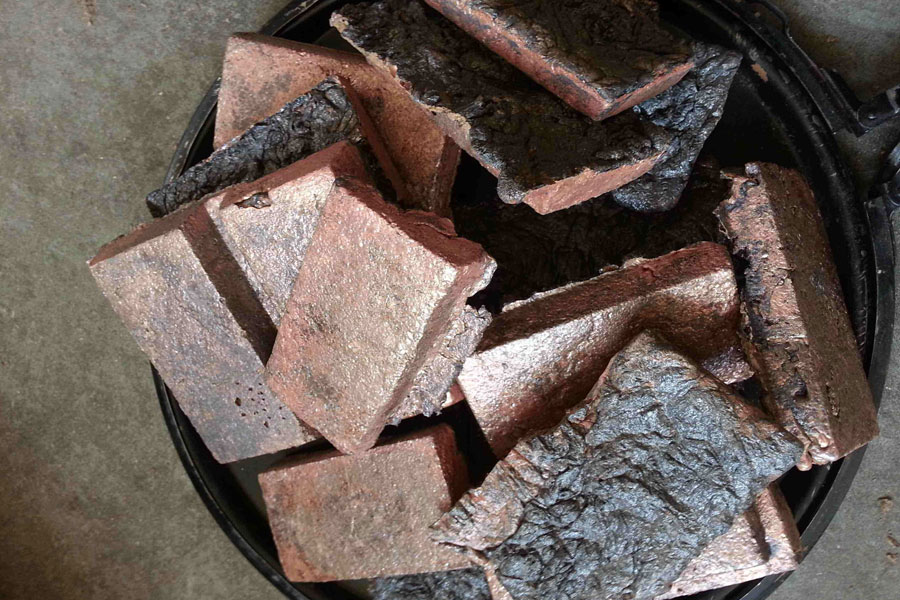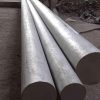
Rare earth elements (REEs) are a group of metals for short, containing 17 different elements: 15 lanthanides: lanthanum (La), cerium (Ce), praseodymium (Pr), neodymium (Nd), promethium (Pm). , Samarium (Sm), Europium (Eu), Gadolinium (Gd), Terbium (Tb), Dysprosium (Dy), Holmium (Ho), Erbium (Er), Thulium (Tm), Ytterbium (Yb), Lutetium (Lu) , And other XNUMX one element scandium (Sc) and yttrium (Y). Although rare earth elements are almost insoluble in copper, the addition of small amounts of rare earth elements, either alone or mixed, is beneficial to the mechanical properties of copper and has little effect on copper conductivity. These elements form high melting point compounds with impurities such as lead and bismuth in copper and are distributed in the particles as fine spherical particles to improve the high temperature plasticity of the copper alloy.
Experimental results show that when 0.008% mixed rare earth elements or Y is less than 0, adding L% to copper can significantly improve the mechanical and technical properties of copper. Copper alloy with 0.01%~0.15% La has better mechanical properties, conductivity, and softening resistance than Cu-0.15ag alloy, electronics, petrochemistry, metallurgy, machinery, energy, light industry, environmental protection Widely used in agriculture and other fields. Today we will discuss the effects of rare earth elements on copper and its alloys.
Deoxygenation and dehydrogenation
A strong affinity for oxygen, rare earth oxides provide good thermal stability, and solid oxygen scavenging products containing copper on the liquid surface of the slag phase are eliminated. The addition of rare earth metals clearly removes small amounts of oxygen in copper and its alloys. Thermodynamic calculations have shown that lanthanum, cerium, praseodymium and rubidium are more potent oxygen scavengers, and their oxygen scavenging capacity at high temperatures is significantly higher than that of aluminum and zirconium, beryllium, magnesium and calcium.
Copper solutions are essentially insoluble in N2, CO2, and water vapor, but the opposite is true for O2, SO2, and H2. Rare earth elements easily react with RH2-type RH3-type hydrogen atom state and hydride stability (R: rare earth element) with respect to hydrogen atoms dissolved in molten copper, causing a strong exothermic reaction. Since the amount of hydrogen dissolved in copper is small, the priority of hydrogen and R – H absorbed by the rare earth element is that the hydrogen content is high because the solid solution state of copper and alloy after adding the rare earth element. Although not diminished, the rare earths form a stable solid solution that can avoid hydrogen under heating conditions by the hydrogen reduction of copper in copper oxide and generate steam to generate hydrogen embrittlement.
During processing of copper, adding rare earth elements to the molten copper melt can quickly absorb and dissolve atomic hydrogen. Under certain conditions, low density hydrides are formed that tend to float on the surface of copper solutions. As it is produced, under the action of high temperatures, hydrogen is decomposed again or oxidized to the slag phase.
Removal of impurities
Rare earths have a strong chemical activity and combine with many fusible components to form refractory binary or multiple compounds. It interacts with the low melting point elements sulfur, phosphorus and tin and binds to various refractory rare earth or metal compounds with different atomic ratios such as Ce3Pb (1200°C) and BiCe3 (1400°C). Remains solid, slags together from liquid copper and achieves the purpose of removing impurities.
Structural refinement
Rare earth elements reduce or eliminate columnar crystals, refine crystal grains, and expand equiaxed crystal regions. The atomic radius of rare earth elements (0.174nm-0.204nm) is 60% to 0.127% larger than that of copper (36nm). They react with several elements to form refractory compounds suspended in solution. This increases the number of particles, reduces size and diffusion distribution, improves alloy plasticity and strength, and reduces surface cracks and other defects.
For example, by adding rare earth elements to C28000 copper alloy, as-cast grains can be refined. This facilitates the neutral to carbon phase transformation during recrystallization annealing and improves the mechanical properties of C28000 brass at room temperature.
Change the shape and distribution of impurities
Rare earth elements can turn some of the strip, flake, or block-like impurities in metals and alloys into dots or spheres. For example, beryllium copper alloys Cu2O and Cu2S with almost irregular angles. When the rare earth element increases to 0.05%, some of the inclusions become spherical. Increasing to 0.32% makes all inclusions spheroidized. Finally, the impurities can be evenly distributed throughout the crystal, improving the overall properties of the metal.
In summary, adding rare earth elements to copper and copper alloys forms refractory compounds with oxygen, sulfur, lead, lead, etc., removing impurities and purifying. It forms a stable compound with hydrogen and dissolves in solid solution in copper to avoid “hydrogen embrittlement”. By changing the morphology and distribution of some impurities, we improved the metallographic structure, refined the crystal grains, reduced or eliminated columnar grains, and expanded the equiaxed crystal region. These combined changes improve the casting, processing, mechanical, welding and corrosion resistance properties of copper and its alloys.






